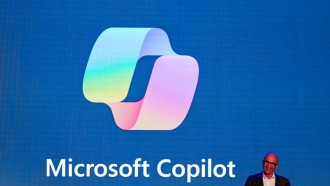Stress-relief is big business. Like obesity and addiction, stress is a killer, and like anything millions of people struggle with on a daily basis, there's a fortune to be made in providing a quick fix.
The advent of wearables has drawn a lot of high-tech contenders into the stress-relief market, which is currently dominated by calming pharmaceuticals and elixirs. Some have been smart, others kooky, but none have managed to rival the popularity of a stress-busting beer. Developers on the tech side of the equation know that may change as consumer willingness to adopt new technologies begins to overlap with growing health consciousness.
In 2011, Isy Goldwasser, a serial entrepreneur and inventor with a background in chemical engineering, teamed up with a group of neuroscientists and engineers from Harvard and MIT to create a consumer grade Transcranial electrical stimulation (tES) device, a technology originally developed to help patients with brain injuries and depressive disorders.
Four years of research and development yielded the Thync System: a conductive neck strip, forehead module and smartphone app that a wearer could use to control his or her stress, energy and relaxation levels. By gearing the Thync System toward consumer wellness rather than medical applications, Goldwasser and his team got a pass on the rigorous, time-consuming FDA pre-market clearance process required for medical devices.
Last year, backed by an Arizona State University study that deemed the (tES) technology employed by Thync System to be safe, the team brought the Thync System to market via the Thync company website and other online outlets at a retail cost of $299. The subsequent customer reviews have been mixed.
Fans of the product describe the energizing effects as feeling like a splash of cold water and a strong cup of tea, and liken its "Bliss" mode to a "glass of scotch." Critics find it difficult to connect, a hassle to apply, foolish-looking and ineffective: "Enjoy your $300 headaches and constant eye twitching," wrote one decidedly unsatisfied Amazon customer.
In the past year, the company has done away with the forehead module and concentrated the unit's stimulating effects in the neck apparatus. Goldwasser and his team, including spokesperson Josh Norman, cornerback for the Washington Redskins who's been using the Thync System to relax over the past year, have been demonstrating the new prototype, which resembles a set of dormant headphones, as a prelude to next year's release.
"We've improved the technology so we can deliver the entire effect even more powerfully and consistently behind the neck," says Goldwasser, who used the feedback from 130,000 test cases and the more than 10,000 people he says currently use the Thync System to develop the forthcoming Thync Relax.
"We've learned that most of our customers like to use our technology for relieving stress and for improving sleep," says Goldwasser, who's completed studies claiming to prove that running the Thync System for 10 minutes a day over a week lowers stress, promotes sleep and improves overall mood without drinks or pills.
"We have all those things built in, we just don't have direct access to them and technology can give us that access," says Goldwasser. "It's so much healthier to do it through our own natural mechanisms rather than with drinks or pills. That's why it's a pioneering, disruptive but really amazing new way."
Are wearable therapeutic devices a real substitute for discipline and self-awareness, or even chemical sedatives? If you're one of the millions of people who've failed to effectively control your stress level through exercise and other natural means or found the physical toll or chemical sedatives to be too high, perhaps they are.





